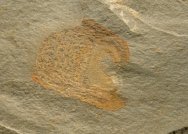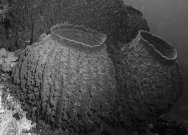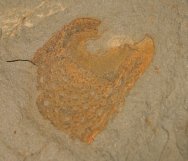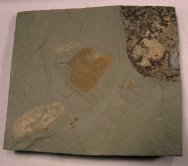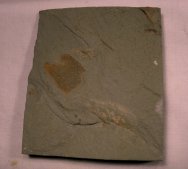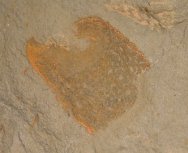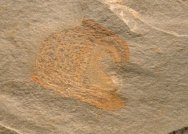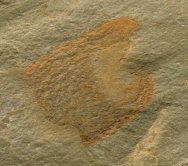Crumillospongia biporosa
Phylum Porifera, Class Demospongia; Family Hazeliidae
Geological Time: Early Middle Cambrian (~525 million years ago)
Size: Fossil is 24 mm by 19 mm
Fossil Site: Pioche Formation, Comet Shale Member, Lincoln County, Nevada
|
Sponge
fossils from the Cambrian Explosion are found in various Cambrian
sites in This
one comes from the Comet Shale Member of the Pioche Formation of
Nevada. This deposit spans the transition of Early to Middle Cambrian
which saw the extinction of the Olenellid trilobites. It is just
younger than the comparable material from the Chengjiang
Maotianshan Shales of Yunnan Province, China and just older
than the Burgess Shale Fauna of British Columbia, Canada. |
